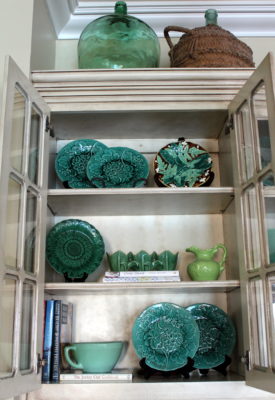
Majolica is a pottery that has a rustic or monochromatic design painted or molded on the surface of the pottery. To me, majolica has a Spanish look about it. When I did a bit of research as to the origins of majolica, I found that the original version was from Italy and was known as maiolica. In the mid-1800s, a new, more durable form of majolica became popular in England. In the 1900s, majolica was copied and mass produced in many countries.
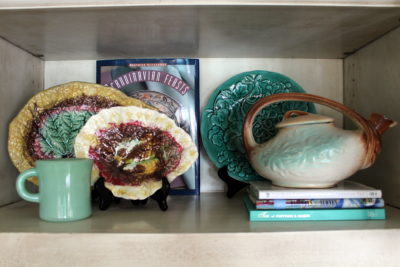
Not all of my pieces are really majolica, but rather in the style of majolica. Of course, a lot of the pieces that are readily available are 20th Century copies, so if you are investing $100 or more in a piece, you will want to verify its origins through maker’s marks, etc.

My pieces are mostly solid green or green with a pattern. They were not acquired for their beauty, appeal to me, or value. Rather, they were created as an instant collection due to their color. A built in hutch was deemed in need of green accent pieces. So, a few stops at antique shops later, and I had an instant collection.
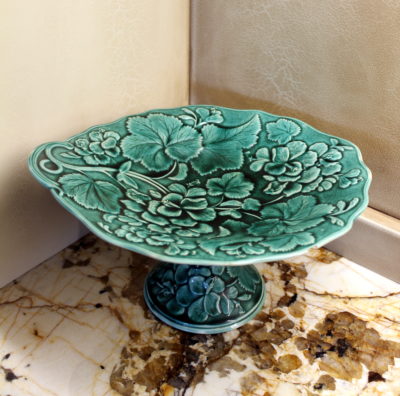
The pieces I own are not perfect. They have chips, flea bites, fissures, etc. I think these imperfections are what I like most about them. They have been enjoyed before they came to my home and are being enjoyed while with me.
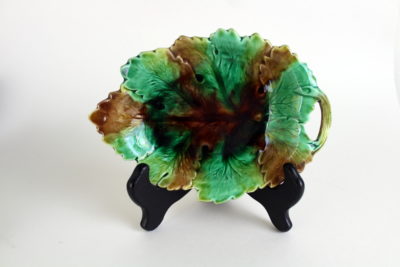
As mentioned, this was an instant collection (I owned no Majolica; then a week later I owned 15 pieces). I do feel like these are pieces that will work as display pieces for years to come, but if I change colors or decide I don’t like them, since they are collectible, I can likely sell them for what I paid for them.
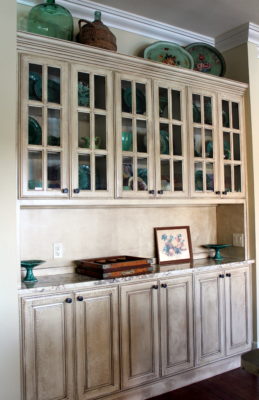
Majolica pieces exude an earthy, primitive beauty. Between the reliefs and paint, they are engaging. Their colors can be either subdued or colorful, depending on how you display them. Currently I have them displayed in a cream colored cabinet. In this instance I think they provide a lovely backdrop to the room. However, I could hang them in a large grouping on a wall to make them a focal point of the room. Displaying them on a wall painted white or a color that doesn’t blend with the color of the majolica would make them stand out.

One thing I have always done when decorating my home is use plates as decoration. Individual or clustered wall hanging, chargers under candles or small plants, pops of color on side tables, etc. This probably underscores my love of dishes more than anything, but it is a great way to enjoy a collection of plates or random plates you inherited that you want to enjoy.

The next time you are out antiquing, look for Majolica. You may just find pieces you love and want to add to your collection.
Footnote: I am not a majolica expert. If any of the pieces from my instant collection aren’t majolica, please forgive me! I only know what I was told!

Absolutely Gorgeous!! I love all your special pieces and how you have displayed them. Each piece is like a work of art of its own, and group together is like a gallery. The imperfections and “flea bites” make them even more special. Thank you for sharing.
Sherry, thank you! It is more to dust, but being behind doors help. Thanks for the comment! K